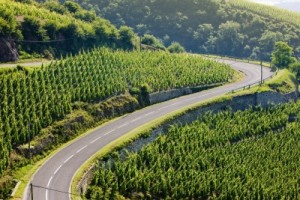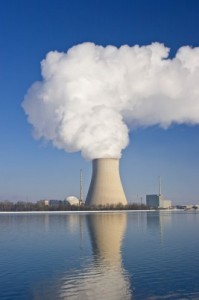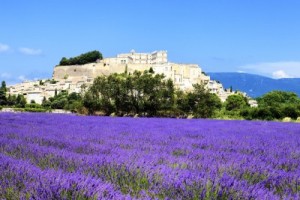 1973 was a very good year for the winemakers of the Côteaux du Tricastin. The region, which sits on the eastern bank of the Rhône River, was approved as an AOC after nine years as a VDQS. It’s a unique area, slightly at a crossroads, being the northernmost appellation of the southern Rhône, with vineyards sitting at a slightly higher elevation than elsewhere in the Rhône.
1973 was a very good year for the winemakers of the Côteaux du Tricastin. The region, which sits on the eastern bank of the Rhône River, was approved as an AOC after nine years as a VDQS. It’s a unique area, slightly at a crossroads, being the northernmost appellation of the southern Rhône, with vineyards sitting at a slightly higher elevation than elsewhere in the Rhône.
A year later, construction began on the Tricastin nuclear plant, just west of the Rhône, and within a few miles of the vineyards. In France, where three quarters of the electricity is generated via nuclear power, you are never far from a reactor. So, life went on, both nuclear and bucolic.
That is, until July 2008, when 4,755 gallons of Uranium solution were accidentally released in a “Level One International Nuclear Event.” That’s level one out of seven, on the  small side, so officially this event was labeled as an “anomaly” as opposed to an “accident” or even an “incident.” However, no one seems to like the thought of nuclear radiation near their food, wine, or water!
small side, so officially this event was labeled as an “anomaly” as opposed to an “accident” or even an “incident.” However, no one seems to like the thought of nuclear radiation near their food, wine, or water!
Needless to say, sales of Côteaux de Tricastin wines plummeted. In a business where image is everything, the name “Tricastin” had become associated with a nuclear error, however small. Some producers reacted by printing the name of the appellation in teeny-tiny print, or even moving it to the back label. Others brought in Geiger counters to prove the wine was not radioactive. Some even gave into EU incentives to dig up their vines and find a new profession.
Others began to look for a more permanent solution, and petitioned the INAO for a name change. The INAO, defenders of terroir that they are, do not take name changes lightly. However, in this case, a change was allowed and as of the 2010 vintage, Côteaux du Tricastin is now officially known as the Grignan-Les Adhémar AOC.
The new name refers to Grignan, the main village of the region, which comes complete with an elegant Château and ties to both nobility (the dashing Count of Grignan was a member of the noble Adhémar family) and French literature (the 17th-century letters of the Marquise of Sévigné were addressed to an inhabitant of the Château). The vignerons of the region thought this was a nicer association than glow-in-the-dark wine.
Along with the name change, tougher standards for the wines of the region were enacted, which include lower permitted yields, restrictions on herbicides, and minimum percentages for the highest quality grapes.
Red wines of the Grignan-Les Adhémar AOC are made from Syrah and Grenache, with Carignan, Mouvèdre, and Cinsaut permitted up to levels of 15% each, as long as their combined total does not exceed 30%. Whites are a blend of Grenache Blanc, Clairette, Marsanne, Roussane, and Viognier; with no single variety allowed to exceed 60% of the final blend.
Post authored by Jane A. Nickles, CWE – your SWE Blog Administration jnickles@societyofwineeducators.org
